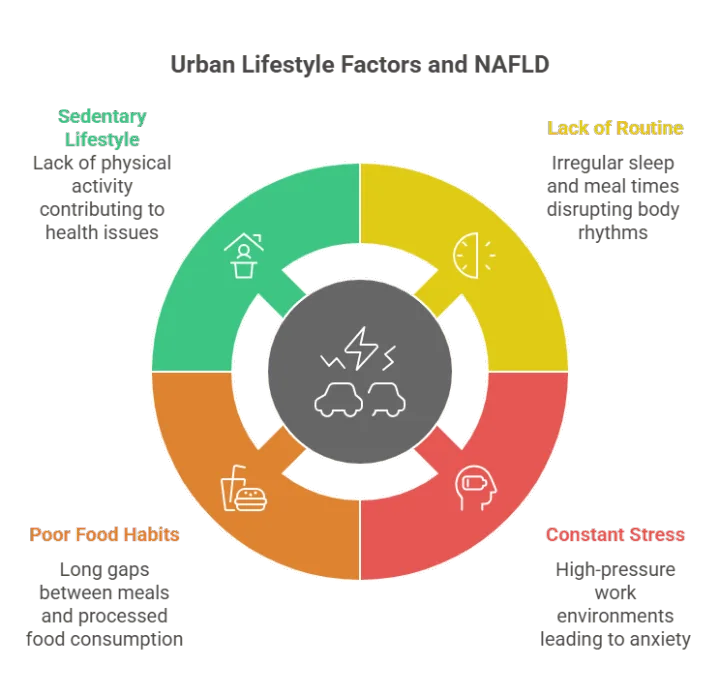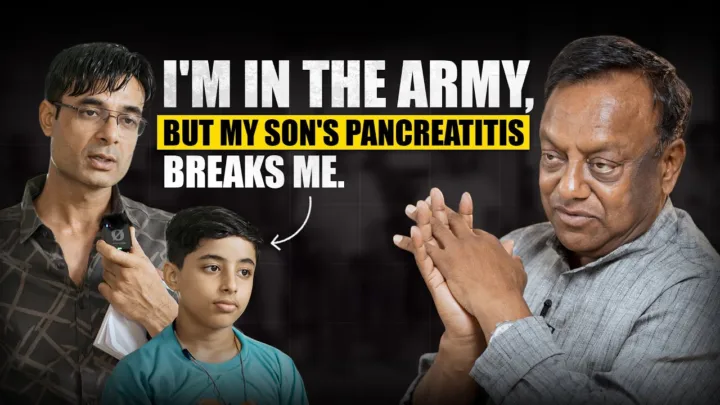Often perceived as a consequence of excessive alcohol use, Fatty Liver Disease has taken a new and concerning form: Non-Alcoholic Fatty Liver Disease (NAFLD). In India, this condition is emerging as a silent epidemic, affecting as many as one in four adults and a growing number of children. Despite its prevalence, there remains a significant lack of awareness about its symptoms, causes, and the long-term consequences it can have on our health.
In a recent discussion, Vaidya Shikha Prakash, CEO of Padaav Ayurveda, and a moderator, Divangi, shed light on this crucial health issue, providing invaluable insights from an Ayurvedic and clinical perspective.
What Exactly is NAFLD?
The first step to understanding NAFLD is to define it. Vaidya Shikha Prakash clarifies, “NAFLD is Non-Alcoholic Fatty Liver Disease. And it seems very simple, like ‘oh, everyone has it nowadays.’ But its consequences are severe, and it is a root cause of many other serious diseases.” This points to a paradigm shift in medical understanding, where NAFLD is not just a stand-alone condition but a metabolic disorder with far-reaching effects.
The name itself has been recently updated to Metabolic Dysfunction-Associated Steatotic Liver Disease (MASLD) to reflect that it’s a direct result of impaired metabolic health, not just a fatty liver. Research shows that it is strongly associated with conditions like obesity, type 2 diabetes, and high cholesterol.
The Urban-Lifestyle Connection
While it’s a common misconception that NAFLD affects only certain demographics, the conversation highlights its strong link to modern, urban lifestyles. Vaidya Prakash notes, “This disease is more common in people who are more prosperous, more educated. They are well-to-do with good jobs and sit in air-conditioned offices.” She cites several contributing factors that are rampant in urban life:
- Lack of routine: Irregular sleep and meal times.
- Constant stress: High-pressure work environments.
- Poor food habits: Long gaps between meals, eating at odd hours, and consuming processed foods.
- Sedentary lifestyle: Lack of physical activity.
This sedentary life, she explains, is one of the biggest threats to our health today and is at the core of many non-communicable diseases.

Key Symptoms and How to Diagnose NAFLD
Because NAFLD often doesn’t show overt symptoms in its early stages, it is frequently diagnosed by accident. Vaidya Prakash explains, “Sometimes it is accidentally diagnosed. You go for a checkup for something else, like a feeling of heaviness, tiredness, or bloating, and that’s when you find out you have NAFLD.” She identifies a few clinical signs that should never be ignored:
- Dull pain in the upper right abdomen.
- Constant fatigue and low productivity.
- Poor appetite.
- A “brain fog” (poor attention and focus) which is a common symptom in today’s urban population.
- Sudden weight gain, particularly around the waist, as indicated by a poor hip-to-waist ratio.
- Sudden discoloration of the skin, especially on the neck or face.
To check the health of your liver, Vaidya Prakash recommends two basic tests: a Liver Function Test (LFT) and an ultrasonography. These can reveal if the liver is inflamed, if its size is enlarged, or if it has fatty changes.
The Progression of NAFLD and its Consequences
NAFLD doesn’t develop overnight; it’s a gradual process caused by consistent unhealthy choices over many years. Vaidya Prakash describes the progression:
- Inflammation: Unhealthy habits lead to inflammation. The liver, our body’s largest organ after the skin, tasked with metabolizing toxins and breaking down fats, gets “angry.”
- Fat Accumulation: Excess fat and sugar consumption leads to the accumulation of fat globules on the liver. The body’s immune system mistakenly attacks these globules, along with healthy liver cells, causing damage.
- Scarring and Fibrosis: This consistent damage leads to scarring.
- Cirrhosis: The final, irreversible stage of liver disease, where the liver becomes shrunken and hardened.
The consequences of advanced NAFLD extend beyond the liver. It can lead to uncontrolled diabetes, cardiovascular diseases, and in severe cases, even liver cancer (Hepatocellular Carcinoma). Research shows a significant link between NAFLD and an increased risk of heart disease and certain cancers, including breast cancer.

A Simple Path to Reversal and Prevention
The good news is that in its early stages, NAFLD is a reversible condition. Vaidya Prakash highlights five key changes patients should make:
- Fix Your Sleep Schedule: “Sleep is one of the most important things for a healthy liver,” she emphasizes. She advises a fixed sleep time, ideally by 10:30 PM, for 7 to 8 hours.
- Increase Mobility and Exercise: Dedicate at least one hour a day to physical activity and strive to avoid a sedentary lifestyle.
- Avoid Refined Sugar and Processed Foods: Limit the consumption of processed and high-sugar foods.
- Manage Stress: Vaidya Prakash states that stress is a major trigger for the disease. Finding ways to relax and disconnect is crucial for healing.
- Connect with Nature: Engaging in a hobby, spending time outdoors, or anything that brings a sense of calm can significantly aid in recovery.
An Ayurvedic Wisdom: Prajnaparadha
Vaidya Prakash concludes by talking about a core Ayurvedic principle, Prajnaparadha, which means “offense against wisdom.” This means that despite knowing what is right for us—the right foods to eat, the importance of exercise—we consciously make choices that harm us.
“We all have equal intelligence,” she says. “We all know these things. But knowingly, we make mistakes. And when a problem happens, we ask, ‘Why me?’”
Ultimately, the power to prevent and reverse NAFLD lies in our hands. By self-regulating and listening to our body’s needs, we can restore our health and ensure a long, disease-free life.






